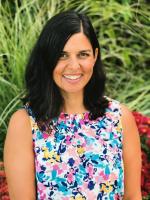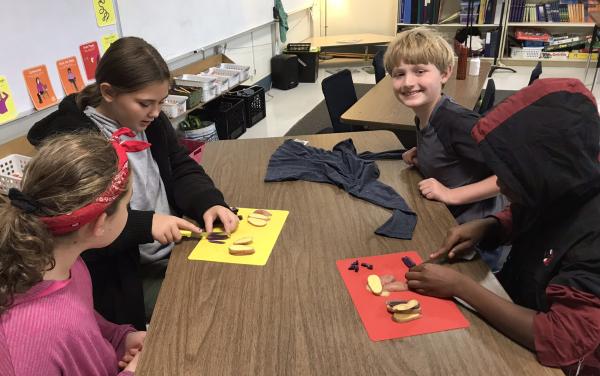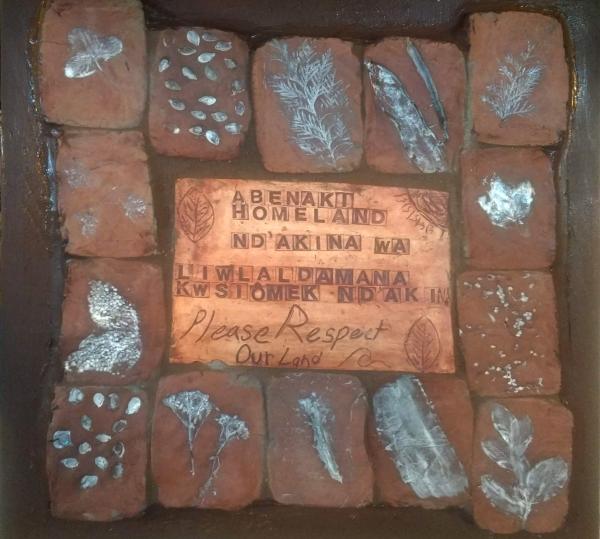Wow, impressive work done by Ms Malik. Wish more teachers taught like her. Great work of the school district, community and the indigenous people in supporting her! So proud of her!
Threading the Past into the Future: Infusing Indigenous Perspective in our Curriculum
“Where is the Indigenous perspective in our place-based education work?”
Champlain Elementary 5th grade teacher Aziza Malik posed the question to herself and her colleagues, and began a journey of discovery and design that relies on innovation with new and standing partners within and beyond her school.
Since Ms. Malik sparked this inquiry, several pieces of interdisciplinary curricula have been revisited to amplify Indigenous voice, and new school- and district-wide initiatives are shedding light on the Abenaki past, present, and future related to the land upon which these Burlington schools sit.
Teachers at Champlain Elementary are rethinking the garden and cooking curriculum to diversify both the crops and the conversations that emerge from the students’ stewardship of that land and soil. Abenaki foods will be added to the garden and school kitchen, alongside typical Vermont crops and crops that reflect New American populations.
One wide-reaching initiative is the land acknowledgement project. Students and teachers across the district have partnered with Abenaki elders, educators, and artists to develop signage that clearly announces the presence of Abenaki people throughout time. Surrounding the signs are tiles made of clay harvested from Engelsby Brook, which runs adjacent to the Champlain School property. Using plants that are culturally significant to the local Abenaki people, students pressed designs into these tiles, while learning about the characteristics, uses or biology of each plant.
For Ms. Malik, all of this work acknowledges the land as an equal partner in the learning, “bringing Abenaki culture alive and helping to make Abenaki people visible, not just in the past, but in the present.”
What inspired you to begin this work?
An unfolding of things...my masters’ program in Leadership for Sustainability, my place-based education background, participating in the Burlington School District’s Restorative Practices Collaborative and seeing that restorative practices have roots in Indigenous culture. I realized that Indigenous voice had not been part of my work yet so I started looking at our district curriculum and I found the Indigenous perspective missing.
I began asking my colleagues, “What do you think about inclusion of Abenaki perspective in this practice, in our curriculum?” The response was really positive, and we’ve had support from the Office of Diversity and Equity, too. This year, the first state-wide observation of Indigenous People’s Day and the importance of this day on a district level gave the project even more energy and interest.
What has been significant about the work you’ve begun?
When we first started talking about the Indigenous people of this land a student said, “I go to Camp Abenaki.” That was the only connection my students had. Now students know that the Abenaki have been here for thousands of years and are still here today. This is the Homeland of the Abenaki people. And our students have made personal connections with them! It was really amazing to have people share their culture with us, spend time with us, and be in relationship with us. We’ve worked with so many talented and knowledgeable people--all of whom want to share what they know with us.
Now we’re working with a contemporary artist, Bryan Blanchette, singing about climate change--we’re thinking about issues of the future. Through this musical collaboration students are learning and speaking the Abenaki language! Our students have been invited to sing in Abenaki on the new song, Water is Rising, with Bryan at the Flynn Theater and on his new album!
The unexpected connections have been amazing. The land acknowledgement project has spiraled out into writing, debate, science, music and language studies, and physical education. Students and teachers are both making connections across classrooms and disciplines. They aren’t seeing subjects as siloed anymore.
By threading Abenaki perspectives into our daily life at school, we are getting kids outside, being more place-based, respecting the land, and being better stewards of the land around the school campus.
What’s next for this initiative?
Opportunities to weave in Indigenous ways of knowing and being are everywhere. I’m not talking about designing curriculum that teaches about Abenaki culture, I’m talking about using the lens of Abenaki culture to learn literacy, science and math skills; and writing, advocacy, collaboration and communication.
We need to work across the district to make our resources and ideas available to all elementary schools. We also need to continue advocating for including Indigenous voices in district-wide professional development.
Lessons learned?
- Find the Indigenous people in your community. Who are they? Where are they? Then, connect with them.
- Have the courage to send an email to someone you don’t know!
- Listen to the wants and needs of the Indigenous community about how best to work together.
- Everyone is different; there is not just one view of Abenaki life or culture.
- Advocate for what you think the students and the community need.
- Don’t be afraid to try something new. It’s worse to not do anything than to do it wrong. I definitely have messed up. But just like we tell our kids, “Mistakes are valuable. We learn from them.”
- Ask whose voices are missing here, then bring those voices to life.
Comments
Great job Aziza. Impressive work. Keep up the good work.



